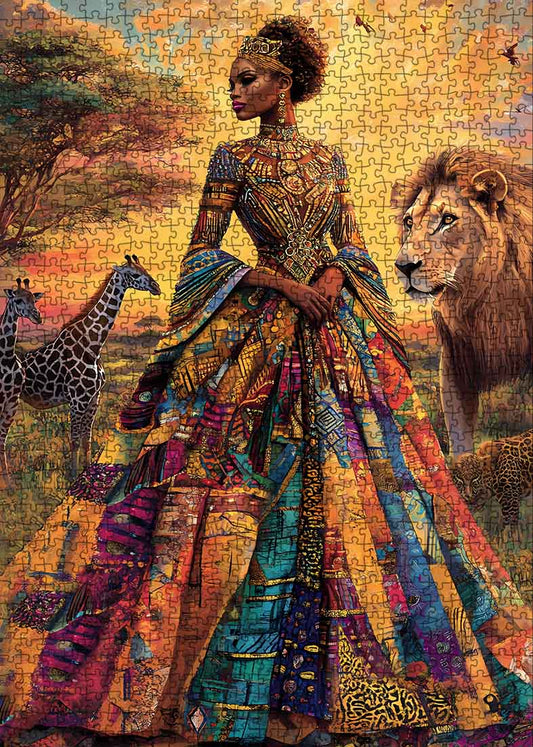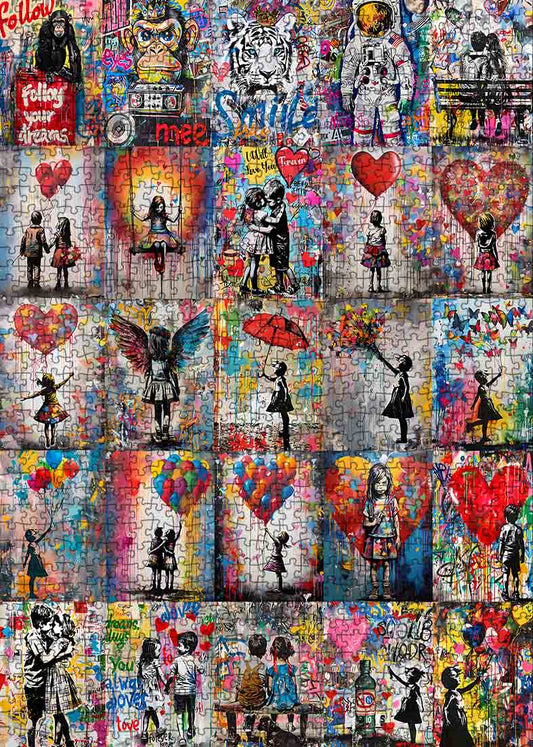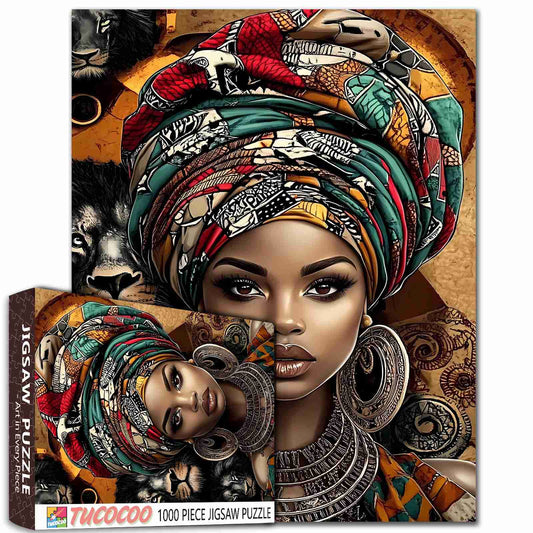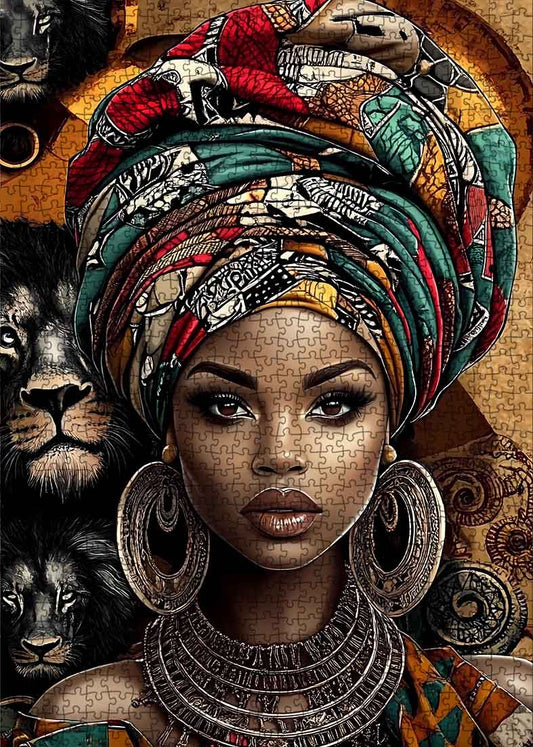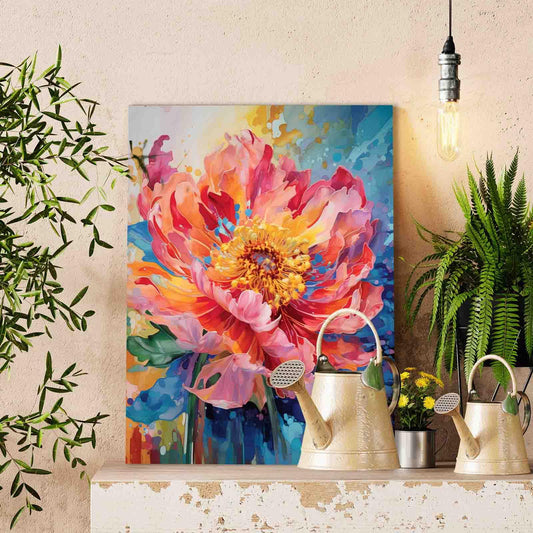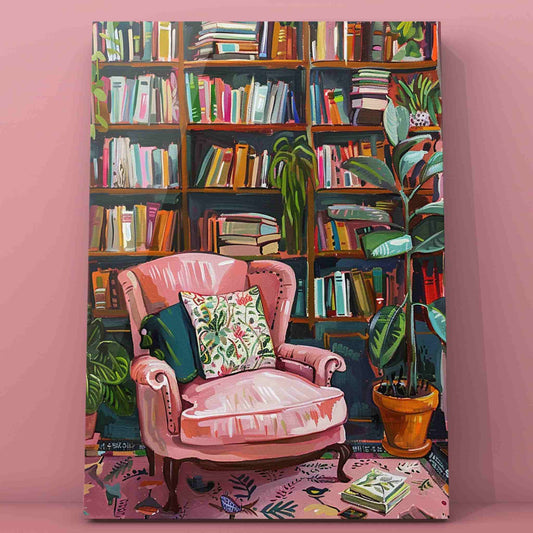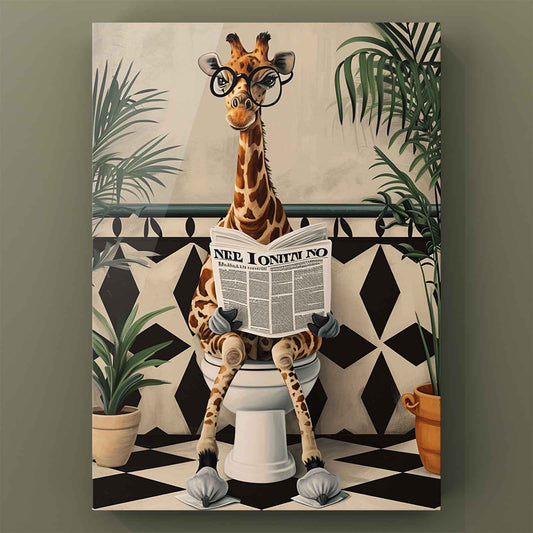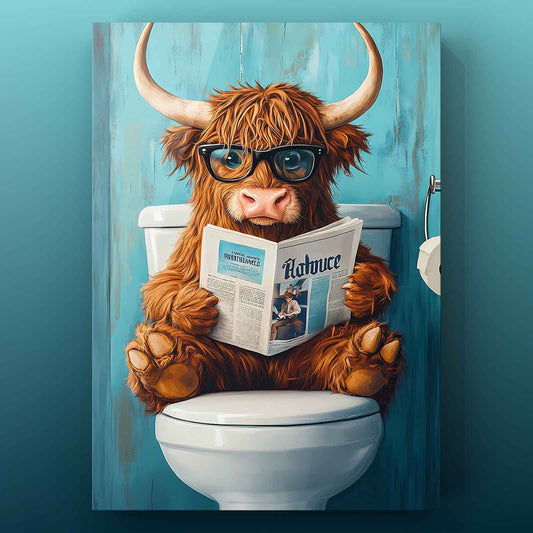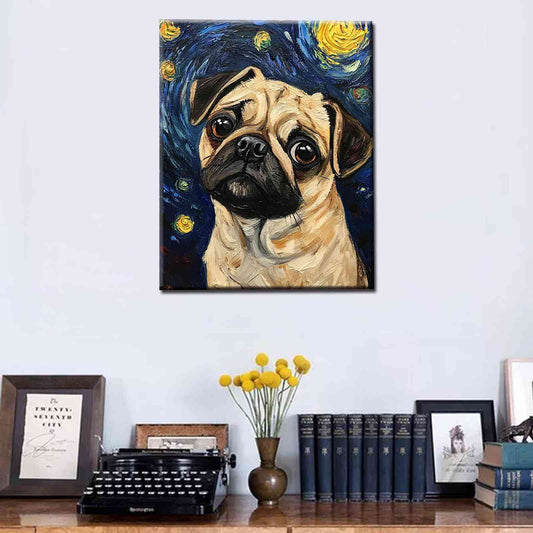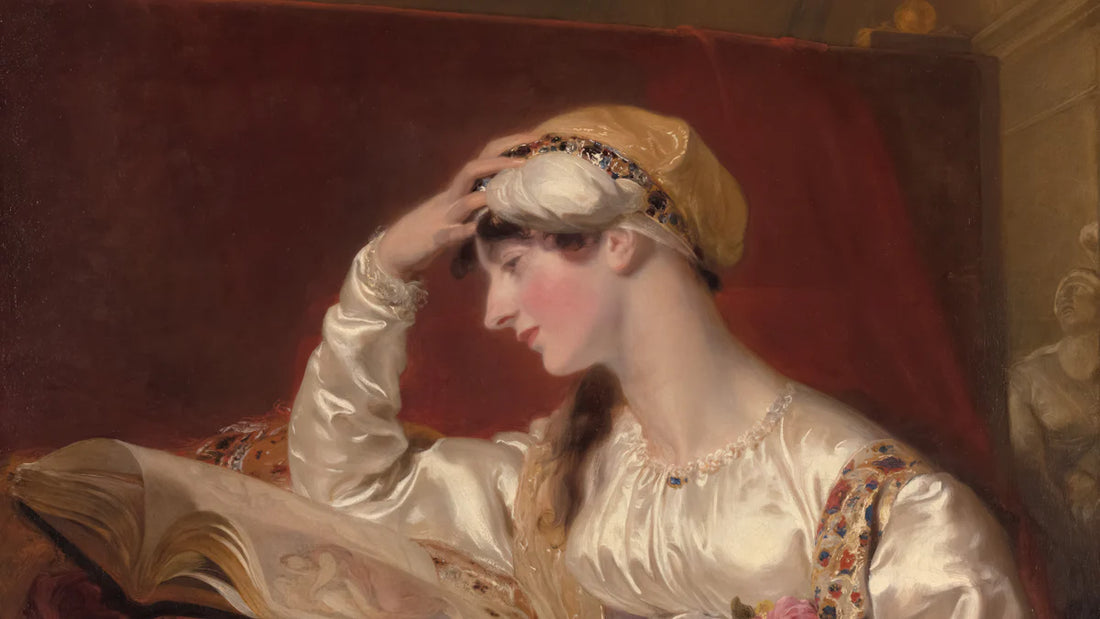
Famous Paintings of Women
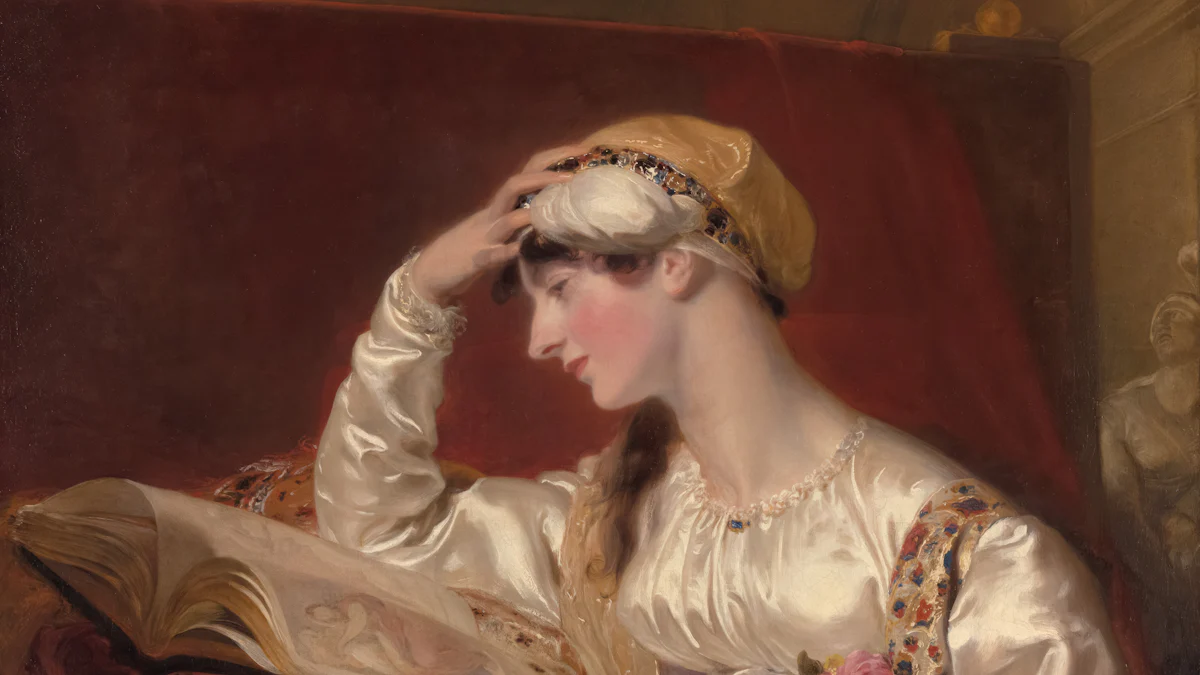
Famous paintings of women captivate audiences with their timeless beauty and compelling narratives. These renowned artworks embody cultural values, historical significance, and groundbreaking artistic innovation. For instance, Botticelli’s Birth of Venus celebrates mythological beauty, while Manet’s Olympia defies traditional conventions. Iconic female portraits, such as Vermeer’s Girl with a Pearl Earring, have profoundly influenced art history, shaping movements like Impressionism and Cubism. Female artists, including Frida Kahlo, transformed self-expression through deeply personal and autobiographical works. These famous paintings of women continue to inspire, offering a fascinating glimpse into the evolving portrayal of women in art.
Key Takeaways
Famous paintings of women show beauty and cultural importance in art.
Renaissance artists honored women with detailed and meaningful paintings.
The Mona Lisa is famous for its mysterious look and skillful style.
Botticelli’s Birth of Venus was bold, showing a nude woman in art.
Baroque and Rococo styles focused on feelings and uniqueness in portraits of women.
Manet’s Olympia questioned old ideas by showing a bold and strong woman.
Modern art looks at identity and feminism, often questioning society’s rules.
Paintings like Frida Kahlo’s The Two Fridas show personal pain and culture.
Renaissance Masterpieces of Women
The Renaissance period brought forth some of the most famous paintings of women, showcasing their beauty, virtue, and evolving societal roles. Artists of this era celebrated femininity through intricate details, idealized forms, and profound symbolism. Let’s explore three iconic works that continue to captivate audiences.
1.Mona Lisa by Leonardo da Vinci
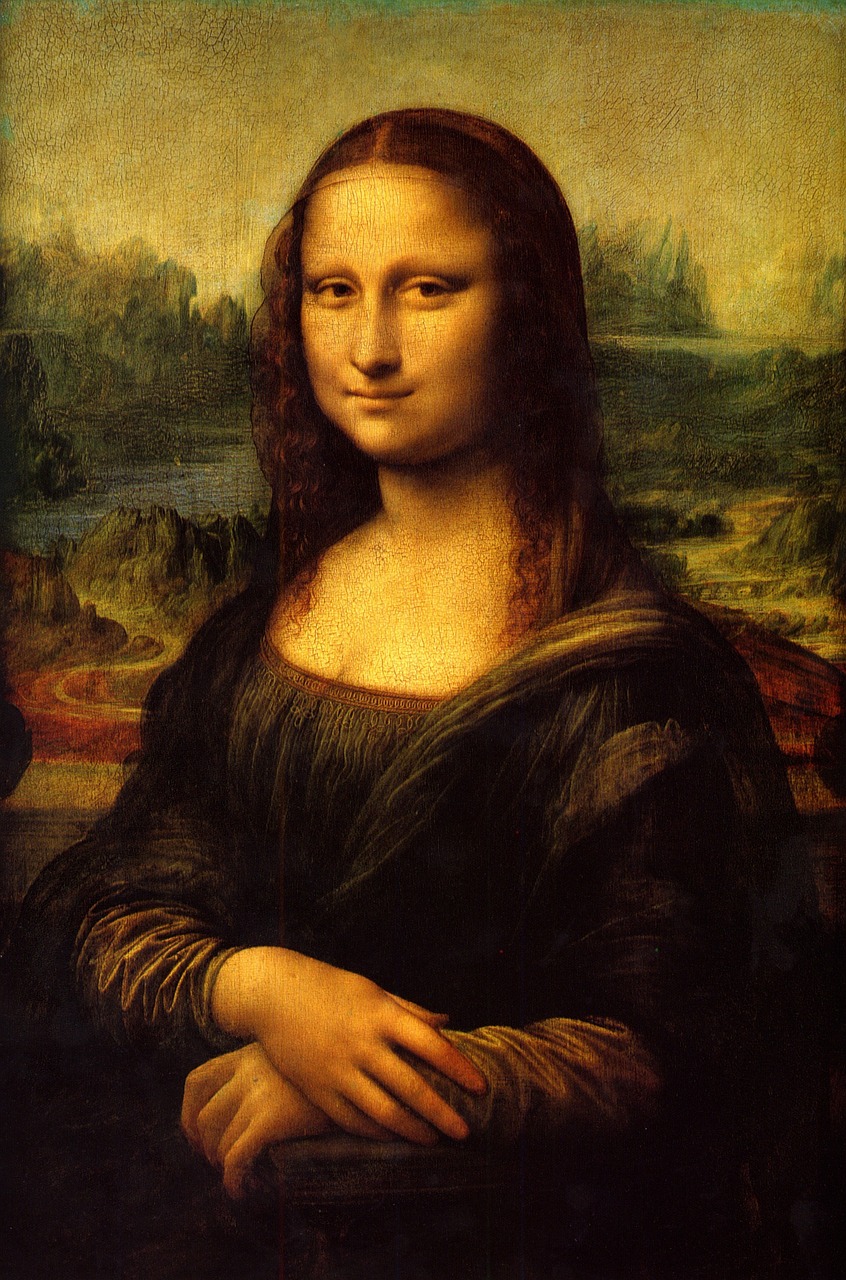
The Mona Lisa stands as one of the most famous paintings of women in art history. Leonardo da Vinci painted this masterpiece during the early 16th century, and it has since become a symbol of artistic genius. You can see how da Vinci captured the sitter’s enigmatic expression, which has intrigued viewers for centuries. Her subtle smile and direct gaze reflect the beauty standards of the late quattrocento, emphasizing grace and poise.
The background of the Mona Lisa adds depth to the painting. The winding paths and distant mountains suggest a connection between humanity and nature. Some scholars believe the landscape may have been influenced by Chinese artistic traditions or Italian geography. This combination of realism and mystery makes the Mona Lisa a timeless treasure.
2.The Birth of Venus by Sandro Botticelli
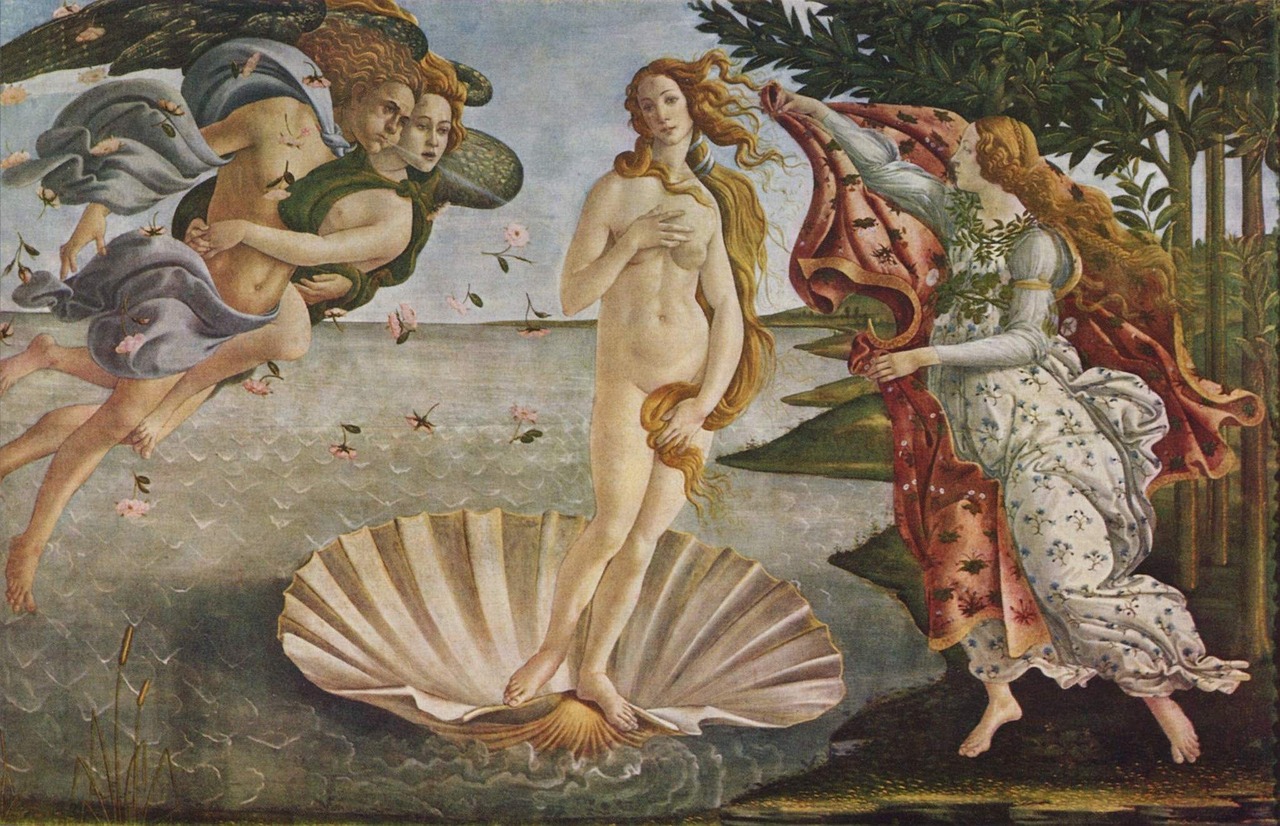
Botticelli’s Birth of Venus is a quintessential example of Renaissance art. This painting depicts Venus, the Roman goddess of love and beauty, emerging from the sea on a shell. Botticelli used the Venus Pudica pose, inspired by classical antiquity, to portray her modesty and elegance. The influence of ancient sculptures, such as the Venus de' Medici, is evident in her form.
The Birth of Venus stands out for its innovative techniques. Botticelli used tempera on canvas, a medium gaining popularity during the Renaissance. The painting’s two-dimensional style evokes ancient Greek vase art, while its classical themes reflect the humanist ideals of the time. You can appreciate how Botticelli broke new ground by presenting a nude female figure, a rarity in post-classical Western art.
3.Lady with an Ermine by Leonardo da Vinci
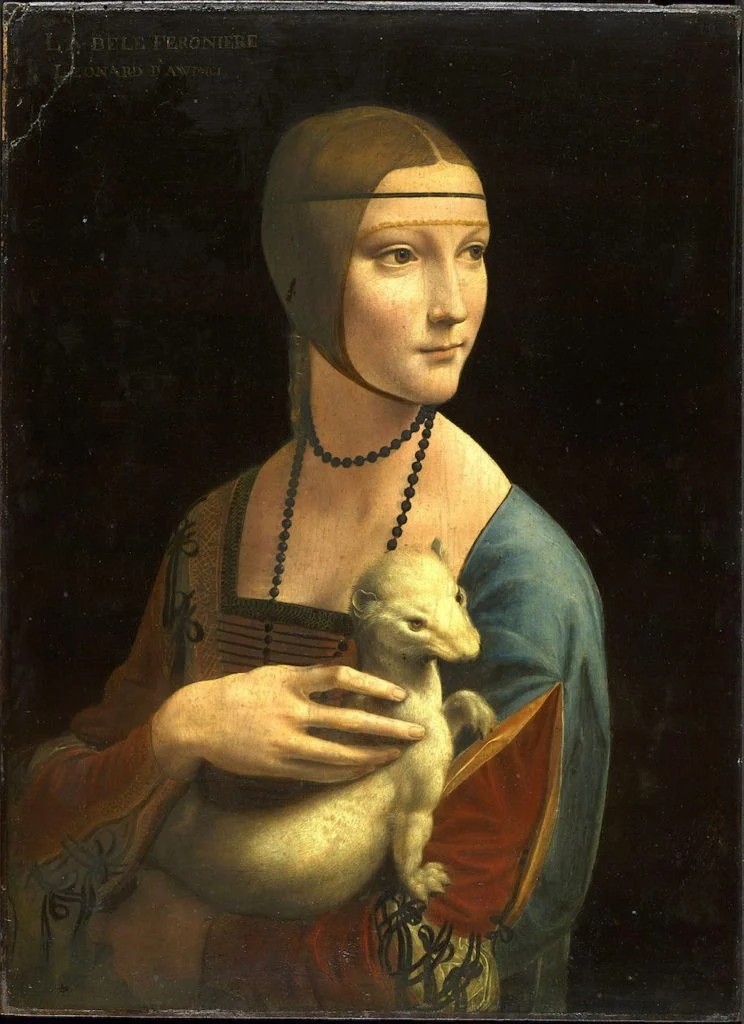
Leonardo da Vinci’s Lady with an Ermine showcases his mastery of portraiture. This painting features Cecilia Gallerani, a young woman associated with the Duke of Milan. The ermine she holds symbolizes purity and virtue, aligning with Renaissance ideals of femininity. Da Vinci’s use of light and shadow brings Cecilia’s features to life, creating a sense of depth and emotion.
This painting also highlights the importance of patronage during the Renaissance. The Duke of Milan commissioned the work, reflecting the era’s emphasis on art as a status symbol. Despite surviving historical turmoil, including theft during World War II, the Lady with an Ermine remains a testament to da Vinci’s innovative approach to portraying women.
These Renaissance masterpieces reveal how artists of the time celebrated women’s beauty, virtue, and complexity. They continue to inspire admiration and study, offering a glimpse into the cultural and artistic achievements of the era.
Baroque and Rococo Iconic Female Portraits
Baroque and Rococo art brought a new dimension to the portrayal of women. These styles emphasized emotion, elegance, and individuality. Baroque paintings often conveyed strength and drama, while Rococo art celebrated lightness and beauty. You can see these differences clearly in the following iconic female portraits.
4.Girl with a Pearl Earring by Johannes Vermeer
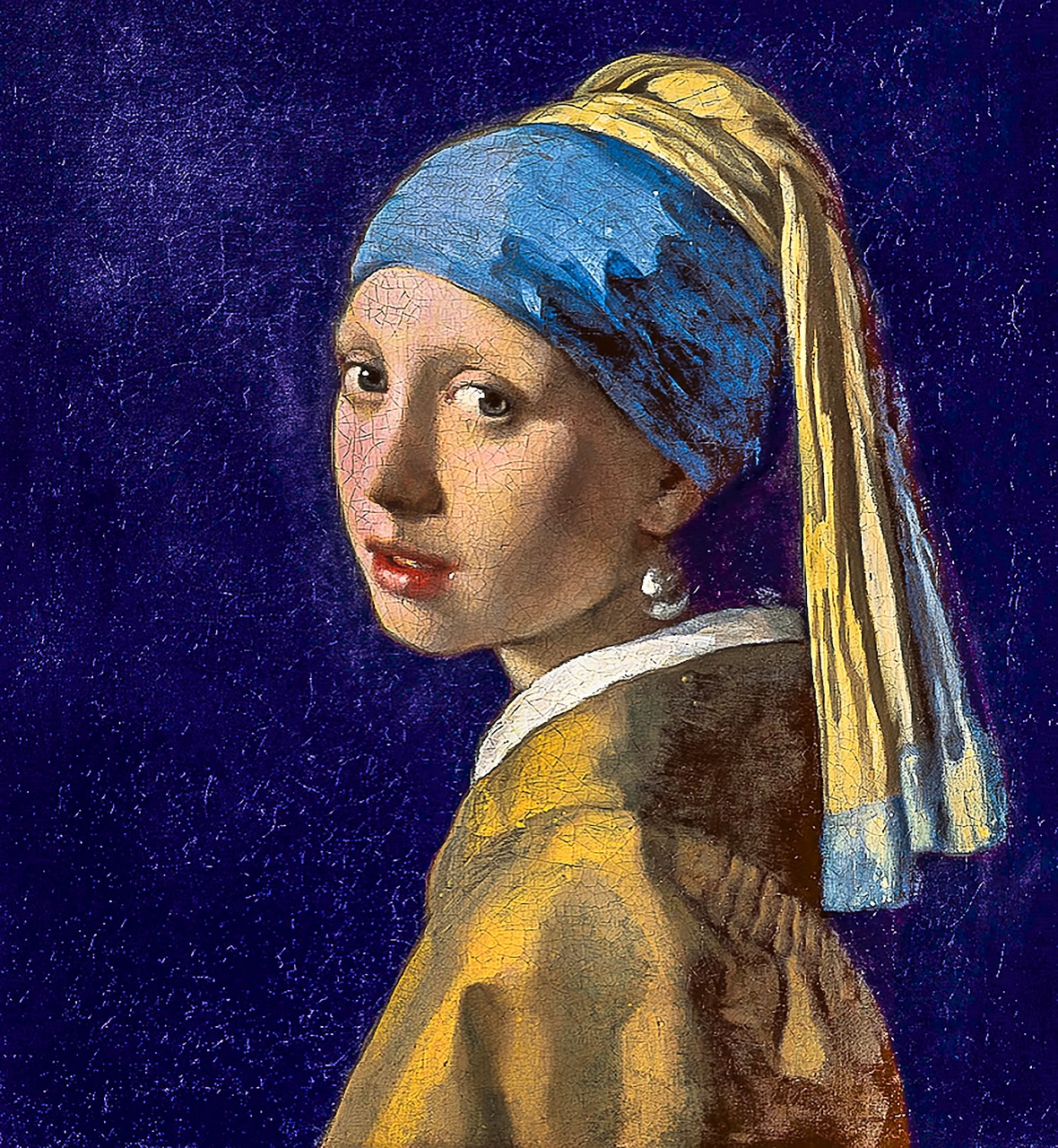
The Girl with a Pearl Earring is one of the most celebrated paintings of women. Johannes Vermeer created this masterpiece during the Dutch Golden Age. The painting captures a young woman turning toward you, her lips slightly parted, and her gaze filled with mystery. The pearl earring she wears reflects light, adding a luminous quality to the artwork.
This painting gained widespread fame in the late 20th century. Critics like Étienne-Joseph-Théophile-Thoré reassessed Vermeer’s work, elevating his reputation. Exhibitions in 1995 and the 1999 novel Girl with a Pearl Earring by Tracy Chevalier further popularized the painting. The novel imagined the girl as Griet, a fictional maid, and inspired a 2003 film adaptation starring Scarlett Johansson. Modern imaging techniques have revealed hidden details, such as a green curtain and fine eyelashes, showcasing Vermeer’s skill and use of costly pigments.
5.Portrait of Madame de Pompadour by François Boucher
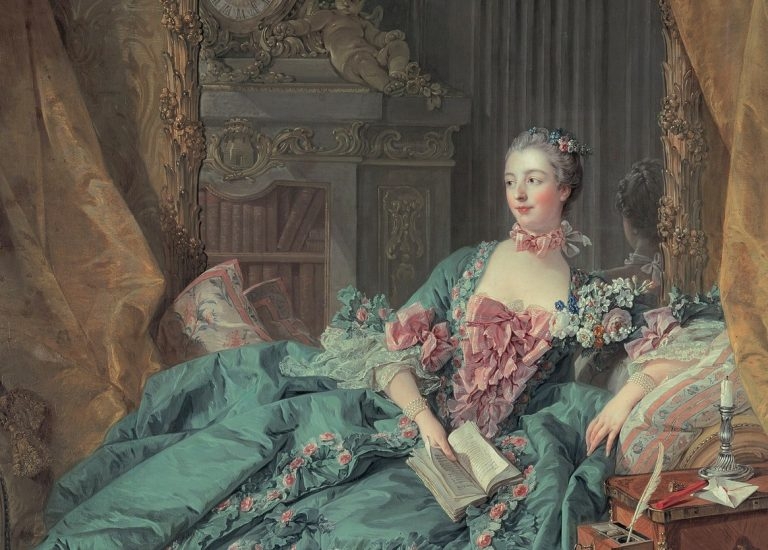
François Boucher’s Portrait of Madame de Pompadour exemplifies the Rococo style. This painting portrays Madame de Pompadour, a prominent figure during the Enlightenment, in a luxurious setting. Her elegant green silk dress, adorned with pink bows and roses, reflects the Rococo emphasis on fashion and beauty. You can notice the intricate details of her gown, which highlight the artist’s mastery.
The objects surrounding her tell a story of cultural refinement. Books and classical statues symbolize her intellectual pursuits and patronage of the arts. A feather quill hints at her support for Enlightenment philosophers. Architectural drawings in the painting reveal her involvement in design, aligning with Rococo’s focus on personal expression. This portrait captures her glamorous life and her role as a trendsetter in 18th-century France.
6.Judith Slaying Holofernes by Artemisia Gentileschi
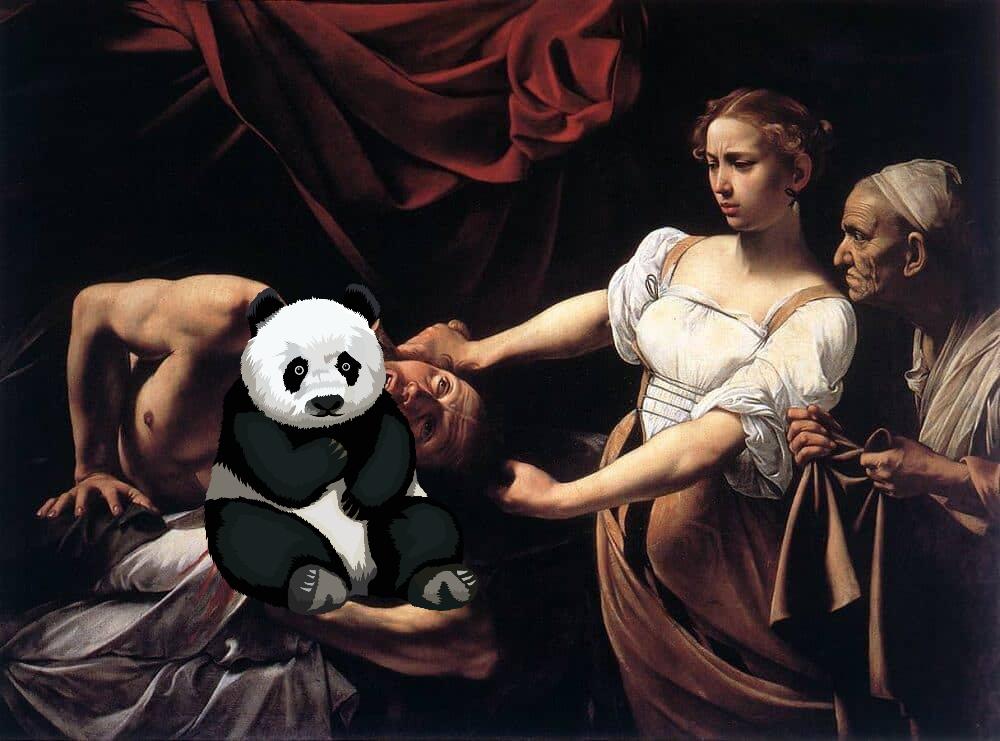
Artemisia Gentileschi’s Judith Slaying Holofernes stands out as a powerful Baroque painting. It depicts the biblical story of Judith, who beheads the Assyrian general Holofernes to save her people. The dramatic composition and intense emotions draw you into the scene. Judith’s determination and strength are evident in her expression and actions.
This painting reflects Gentileschi’s personal experiences. As one of the few successful female artists of her time, she faced significant challenges. The narrative of Judith resonated with her, symbolizing resilience and justice. During the Baroque period, this story appeared frequently in art, literature, and music, highlighting its cultural significance. Gentileschi’s version remains one of the most iconic female portraits from this era, showcasing her ability to convey both power and vulnerability.
These Baroque and Rococo masterpieces reveal the diverse ways artists portrayed women. They highlight the emotional depth, elegance, and individuality that define these art movements. By exploring these works, you gain a deeper appreciation for the evolution of paintings of women.
Romantic and Impressionist Paintings of Women
The Romantic and Impressionist periods brought a fresh perspective to the portrayal of women in art. These movements emphasized emotion, individuality, and the fleeting beauty of everyday life. You can see how artists of this era captured women in ways that reflected both personal and cultural narratives.
7.Olympia by Édouard Manet
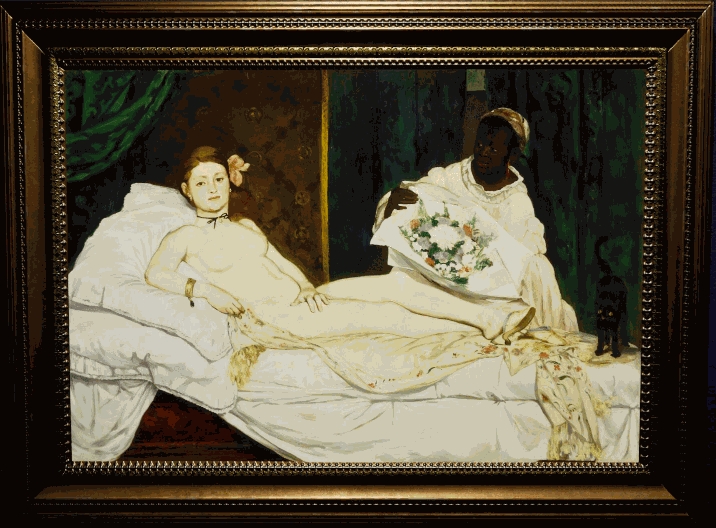
Manet’s Olympia shocked audiences when it debuted in 1865. This painting portrays a reclining nude woman, gazing directly at you with an unapologetic expression. Unlike traditional depictions of women as passive or idealized, Olympia presents a figure who exudes confidence and agency. The stark contrast between her pale skin and the dark background draws your attention to her commanding presence.
The public’s reaction to Olympia was intense. Critics described the painting as “shapeless” and “putrefied.” Some even called her face “stupid.” The uproar at the exhibition was so severe that armed guards had to protect the artwork. Despite the controversy, Olympia became a pivotal work in art history, challenging societal norms and redefining how women were portrayed in art.
8.Woman with a Parasol by Claude Monet
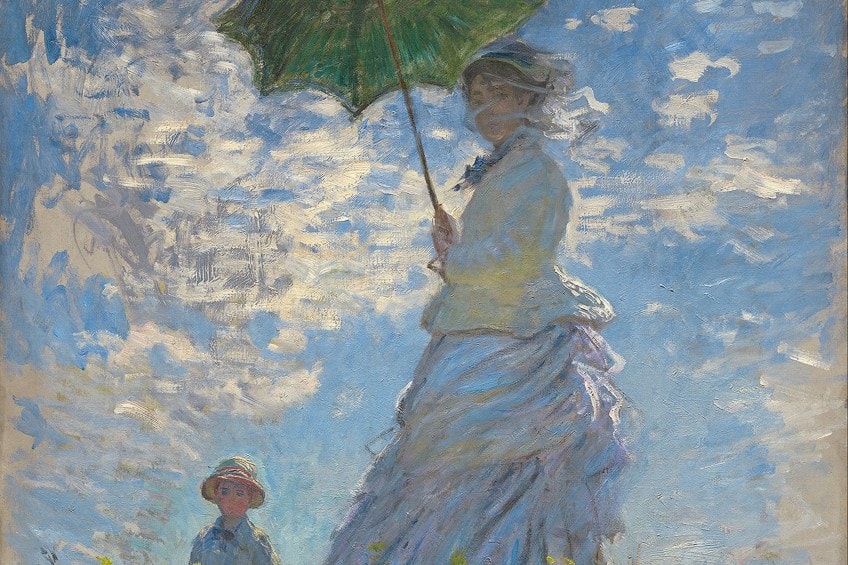
Monet’s Woman with a Parasol exemplifies the Impressionist style. This painting captures a moment in time, showing Camille Monet, the artist’s wife, standing outdoors with a parasol. The loose and expressive brushwork conveys spontaneity, making you feel as though you are witnessing the scene firsthand. Monet’s use of light and color is remarkable. Sunlight filters through the parasol, creating a warm glow, while shadows appear in shades of blue and violet instead of traditional black.
The composition of the painting is asymmetrical, with Camille dominating the foreground. Monet’s bright palette of blues, greens, and yellows enhances the vibrancy of the scene. He painted this piece outdoors, embracing the Impressionist practice of plein-air painting. The quick brushstrokes and simplified details capture the movement of the wind and the fleeting beauty of nature.
9.The Two Fridas by Frida Kahlo
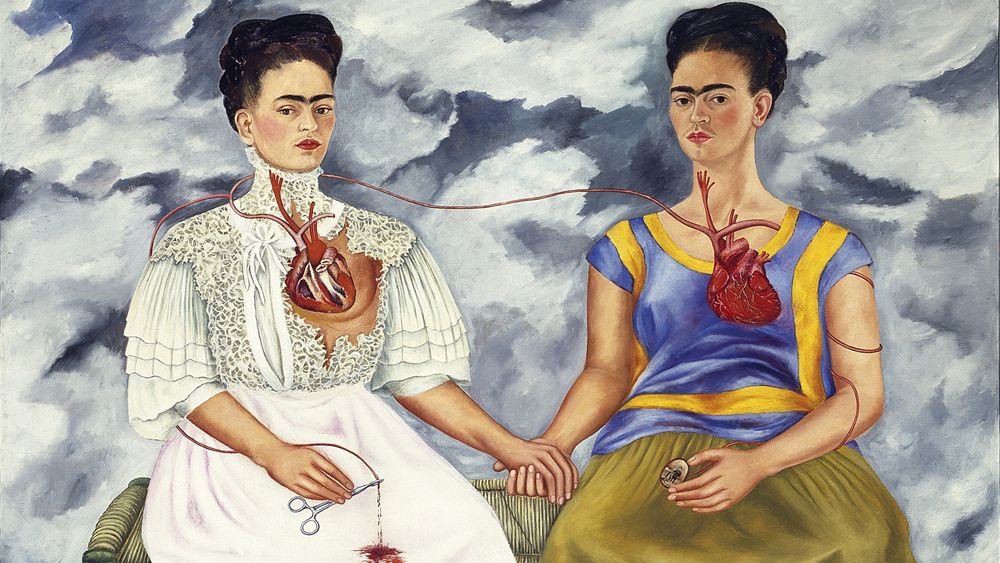
Frida Kahlo’s The Two Fridas offers a deeply personal exploration of identity and emotion. This painting depicts two versions of Kahlo seated side by side, their hearts exposed and connected by a vein. One Frida wears traditional Mexican attire, while the other dons a European-style wedding dress. This duality reflects Kahlo’s struggle with her cultural heritage and her sense of self.
The painting also symbolizes Kahlo’s emotional turmoil during her divorce from Diego Rivera. The Frida in the European dress holds surgical scissors, cutting the vein that connects her to the other Frida. This imagery conveys pain and resilience. You can also see elements of Mexican culture in the traditional clothing and the use of indigenista iconography, which celebrates her connection to her roots.
These Romantic and Impressionist paintings of women highlight the evolving ways artists depicted women during these periods. They reveal not only the beauty and complexity of their subjects but also the cultural and personal stories behind the art.
Modern and Contemporary Female Portraits
The modern and contemporary art movements introduced bold and innovative ways to portray women. These works often challenge societal norms, explore identity, and reflect cultural shifts. Let’s examine three groundbreaking paintings of women that continue to inspire and provoke thought.
10.Portrait of Adele Bloch-Bauer I by Gustav Klimt
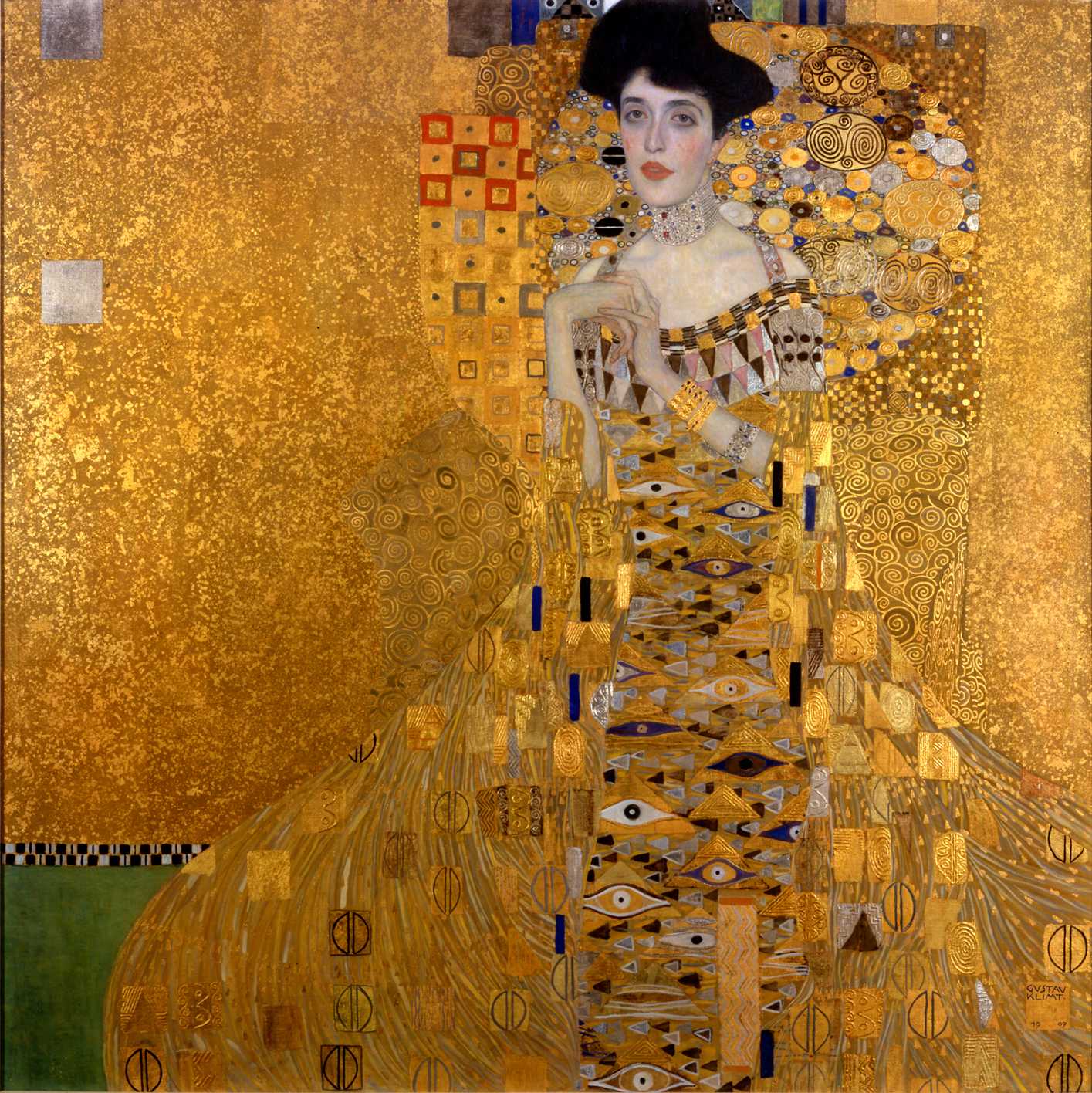
Gustav Klimt’s Portrait of Adele Bloch-Bauer I is one of the most famous paintings of women from the early 20th century. This masterpiece, completed in 1907, showcases Klimt’s signature use of gold leaf and intricate patterns. You can see how the shimmering gold background and Adele’s elegant pose create a sense of opulence and timeless beauty.
This painting holds significant historical and cultural value. During World War II, the Nazis seized it from the Bloch-Bauer family, renaming it Woman in Gold to obscure Adele’s identity. Decades later, Maria Altmann, a surviving family member, fought a landmark legal battle to reclaim the artwork. Her victory in 2005 highlighted the importance of art restitution and justice. In 2006, the painting sold for $135 million, setting a record at the time. Today, it symbolizes not only artistic brilliance but also the enduring fight for cultural heritage.
11.Marilyn Diptych by Andy Warhol
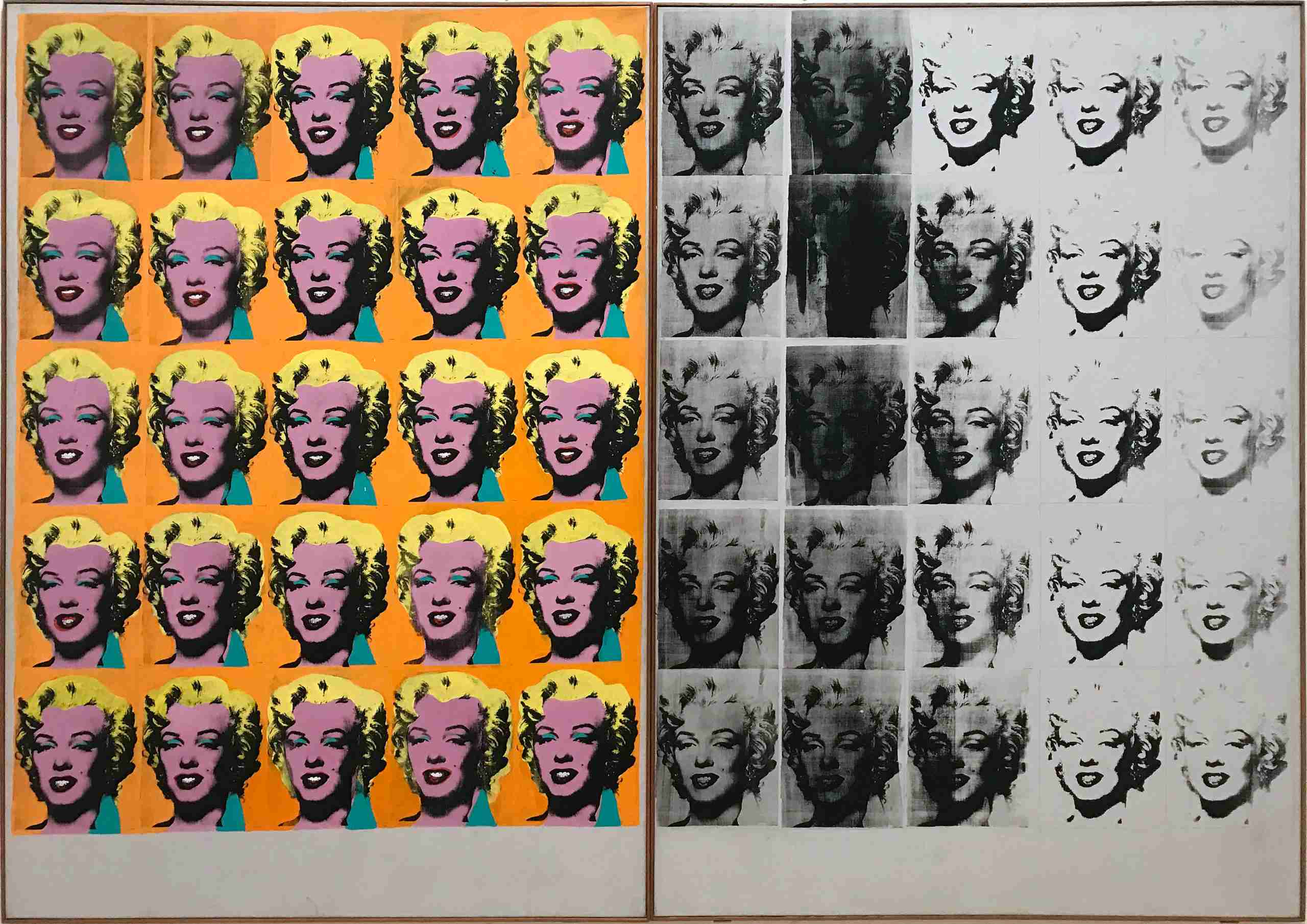
Andy Warhol’s Marilyn Diptych captures the essence of modern pop art. This work, created in 1962, features 50 images of Marilyn Monroe arranged in a grid. The repetition of her face emphasizes her status as a cultural icon. Warhol used vibrant colors like red and yellow to enhance her glamour, while the black-and-white images on the right side evoke a sense of loss and mortality.
This artwork invites you to reflect on the duality of fame. The colorful side celebrates Marilyn’s beauty and charisma, while the faded images remind you of her tragic death. Warhol’s use of silkscreen printing blurs the line between art and mass production, challenging traditional notions of originality. Through this piece, you can explore themes of celebrity, consumerism, and the fleeting nature of life.
12.Untitled (Your Body is a Battleground) by Barbara Kruger
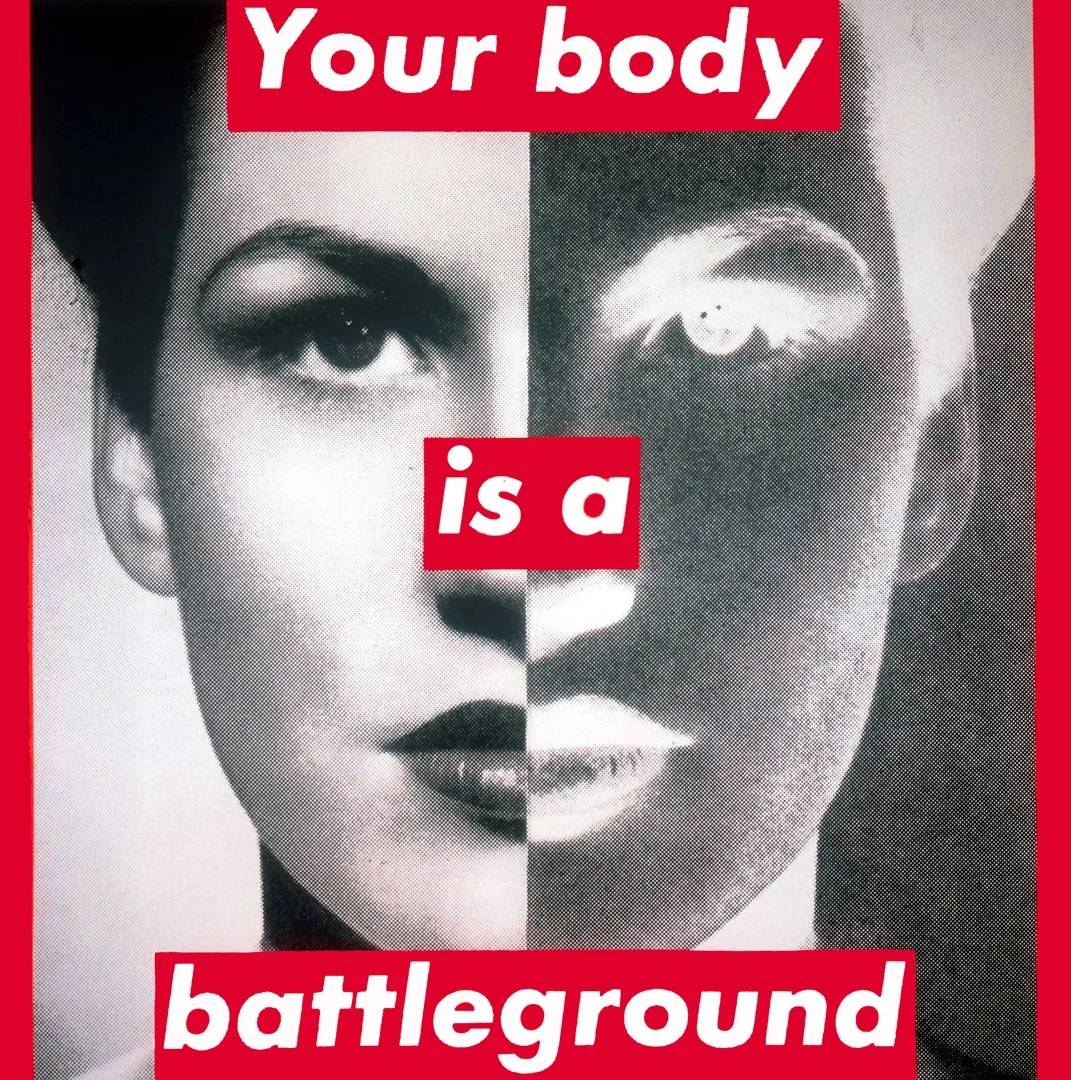
Barbara Kruger’s Untitled (Your Body is a Battleground) delivers a powerful feminist message. Created in 1989, this artwork combines text and imagery to address women’s rights and societal expectations. The phrase “Your Body is a Battleground” appears boldly across a split image of a woman’s face. One side is positive, while the other is negative, symbolizing conflict and duality.
This piece critiques stereotypes and highlights the struggle for women’s autonomy. It urges you to consider how society often objectifies women while denying them agency. The contrasting imagery reflects the tension between pro-choice and pro-life perspectives, making it a poignant commentary on reproductive rights. Kruger’s work challenges you to question societal norms and recognize the complexity of women’s identities.
These modern and contemporary self-portraits and portraits by female artists redefine how women are represented in art. They push boundaries, provoke dialogue, and inspire change, making them essential to understanding the evolution of paintings of women.
Thematic Representations of Women in Art
Art has long explored the multifaceted roles and representations of women. These thematic portrayals reveal how society views women, their power, and their beauty. By examining these themes, you can better understand the cultural and historical significance of iconic female portraits.
Women as Symbols of Beauty
Artists have often celebrated women as symbols of beauty. You can see this in works like Botticelli’s The Birth of Venus, where Venus embodies idealized grace and elegance. Early art, such as the Venus of Willendorf, also highlights fertility and physical form as central to beauty. These depictions often reflect society’s standards of attractiveness during specific periods.
However, this focus on beauty has sometimes overshadowed women’s contributions as artists. Throughout history, women have been idolized in art, yet their creative talents were often ignored. Activist groups like the Guerrilla Girls have drawn attention to this imbalance, challenging museums and galleries to showcase more works by female artists. This recurring theme reminds you of the ongoing struggle for equality in the art world.
Women as Agents of Power
Art has also portrayed women as powerful figures. You can find this in Artemisia Gentileschi’s Judith Slaying Holofernes, where Judith’s strength and determination take center stage. This painting challenges traditional gender roles by presenting a woman as a decisive and heroic figure. Similarly, portraits of queens and noblewomen, such as Boucher’s Portrait of Madame de Pompadour, emphasize their influence and authority.
These representations often reflect societal views on morality and duality. Women in art are frequently depicted as either saints or sinners, highlighting their perceived roles in shaping history. This duality underscores the complexity of their power, showing them as both revered and feared.
Women as Reflections of Society
Paintings of women often serve as mirrors of societal values and norms. You can see this in works like Manet’s Olympia, which challenges traditional ideals of femininity and provokes discussions about gender roles. Similarly, Frida Kahlo’s The Two Fridas explores identity and cultural heritage, reflecting the artist’s personal struggles and broader societal issues.
These artworks also reveal the marginalization of women in the art world. Historically, female artists faced significant barriers, limiting their ability to express themselves. Despite this, their works continue to inspire and provoke thought, offering insights into the evolving portrayal of women in art.
By exploring these themes, you gain a deeper appreciation for the famous paintings of women. These works not only celebrate beauty and power but also challenge societal norms, making them timeless and thought-provoking.
Famous paintings of women have shaped art and culture in profound ways. These works continue to inspire modern artists and spark debates about gender and identity. Renaissance depictions of women, for example, resonate with today’s discussions on representation and societal roles. You can see how these portraits reflect the values of their time while challenging you to think critically about beauty, power, and individuality. By studying these paintings of women, you gain a deeper understanding of history and its influence on contemporary art. They remain timeless, bridging the past and present with their enduring relevance.
FAQ
What makes paintings of women so captivating?
Paintings of women often capture beauty, emotion, and cultural values. They reflect the artist’s perspective and the societal norms of their time. These artworks allow you to explore history, identity, and artistic innovation through a unique lens.
Why is the Mona Lisa considered so iconic?
The Mona Lisa’s enigmatic expression and masterful technique make it a masterpiece. Leonardo da Vinci’s use of sfumato creates a lifelike quality. Her mysterious smile and direct gaze continue to intrigue viewers worldwide.
What is the significance of the portrait of madame x?
The portrait of madame x by John Singer Sargent shocked audiences with its boldness. It portrays Virginie Amélie Avegno Gautreau with elegance and confidence. This painting redefined portraiture by emphasizing individuality over idealized beauty.
How do modern paintings of women differ from older works?
Modern paintings often challenge traditional norms. They explore themes like identity, feminism, and societal expectations. Unlike older works, which idealized women, modern art highlights individuality and complexity.
Are there famous paintings that depict women in everyday life?
Yes, many Impressionist works, like Monet’s Woman with a Parasol, show women in daily settings. These paintings capture fleeting moments and celebrate the beauty of ordinary life.
What role do female artists play in shaping these portrayals?
Female artists bring unique perspectives to their work. Frida Kahlo, for example, used self-portraits to explore identity and emotion. Their contributions challenge stereotypes and enrich the art world.
Why do some paintings of women spark controversy?
Paintings like Manet’s Olympia challenge societal norms and provoke debate. These works often question traditional roles and highlight issues like gender and power, making them thought-provoking and sometimes controversial.
Can paintings of women reflect cultural values?
Yes, these artworks often mirror the values of their time. For example, Botticelli’s The Birth of Venus celebrates Renaissance ideals of beauty and humanism. They provide insight into historical and cultural contexts.


